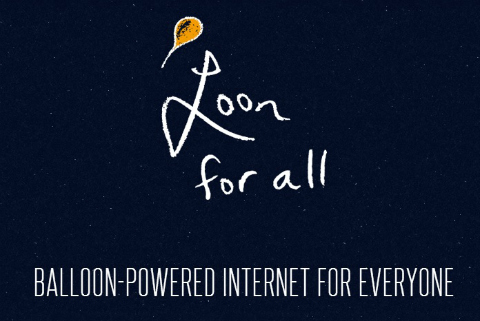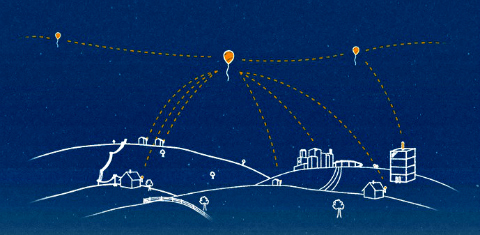Google seems to be really pushing reliable internet access to everyone. From the promising Google Fiber which gives users 1Gbps of download and upload speeds to this, the Google Loon.

As far as we know, Google Loon is one of the project of Google X, the “secret” division of Google that handles the not-so publicly announced and also the most advance projects by the company. Among these are the Project Glass (now Google Glass) and the Google Driverless Car. This project has the potential to provide internet access for developing nations that can’t afford to lay fiber cables or places that it can’t reach.

Loon works with a balloon sent high up to the stratosphere, which is higher than common airplanes’ reach. Then a receiver is installed within the user’s home that connects with the balloons. Now, these interconnected balloons floating smartly in the sky is connected with the local internet service provider creating a cloud network. Each balloon can provide 3G comparable speeds within a 20km radius. Mind you that the each balloon communicates with each other, so they know how far each are and moves to a certain location as needed. Also, they use specific bands for the receivers on the ground to read.
Watch the beautiful introduction video below made by Google themselves to understand what this is about.
So far, Google Loon is a promising project with good heart for people who needs internet connection. Like any, this is not a project without a concern: since Google is the largest advertising network, having more users means wider reach for their ads. But let’s not look commercially, because this is a ground breaking or maybe “sky breaking” opportunity for developing countries.
As of now, the town of Christchurch in New Zealand is currently where the initial trial is.
More info at www.google.com/loon

YugaTech.com is the largest and longest-running technology site in the Philippines. Originally established in October 2002, the site was transformed into a full-fledged technology platform in 2005.
How to transfer, withdraw money from PayPal to GCash
Prices of Starlink satellite in the Philippines
Install Google GBox to Huawei smartphones
Pag-IBIG MP2 online application
How to check PhilHealth contributions online
How to find your SIM card serial number
Globe, PLDT, Converge, Sky: Unli fiber internet plans compared
10 biggest games in the Google Play Store
LTO periodic medical exam for 10-year licenses
Netflix codes to unlock hidden TV shows, movies
Apple, Asus, Cherry Mobile, Huawei, LG, Nokia, Oppo, Samsung, Sony, Vivo, Xiaomi, Lenovo, Infinix Mobile, Pocophone, Honor, iPhone, OnePlus, Tecno, Realme, HTC, Gionee, Kata, IQ00, Redmi, Razer, CloudFone, Motorola, Panasonic, TCL, Wiko
Best Android smartphones between PHP 20,000 - 25,000
Smartphones under PHP 10,000 in the Philippines
Smartphones under PHP 12K Philippines
Best smartphones for kids under PHP 7,000
Smartphones under PHP 15,000 in the Philippines
Best Android smartphones between PHP 15,000 - 20,000
Smartphones under PHP 20,000 in the Philippines
Most affordable 5G phones in the Philippines under PHP 20K
5G smartphones in the Philippines under PHP 16K
Smartphone pricelist Philippines 2024
Smartphone pricelist Philippines 2023
Smartphone pricelist Philippines 2022
Smartphone pricelist Philippines 2021
Smartphone pricelist Philippines 2020
Reader says:
Please correct. Christchurch is in New Zealand.
Daniel Morial says:
Corrected. Thanks!
dodong says:
porn for everyone!
Justin says:
Tumpak!
vince says:
this would me more reliable if they used remotely operated blimps or maybe tethered balloons. The blimps and tethered balloons would be able to hover over a certain area instead of being blown all over the place
vince says:
relying on unpowered balloons means you need either many balloons or are prepared to release more if the balloons already up cannot go back
Mr A says:
I believe these baloons are equiped with solar panels and it has a sort of propellers to navigate itself.
rem says:
WATCH THE VIDEO FIRST BEFORE YOU COMMENT
Wiz says:
many things should be considered. like weather on the country. I think that’s going to be a big factor here.
but all in all, it’s a a very good project.
Mr A says:
While the baloon doesn’t get affected by the weather, the problem lies on sending the signal from the ISP to the baloon. If the entire country is experiencing weather disturbance, then the entire network goes down.
Unless they are using a different way of transmitting data from base to the baloons that can penetrate thick clouds.
beans says:
“Google: All your data are belong to us”
Google is an innovative company but their privacy policies and data collection really disturbs me.
There’s also a risk that this idea by Google could be used by other countries out there something that can be used for warfare. Nukes surrounding at our atmosphere, anyone?
Light says:
Hopefully, Google finds a way to conquer the digital divide. Only a global company can push this high-level innovation, Google’s business is advertising: the more people use the Internet, the bigger the advertising profit they generate.
Sana magkaroon dito sa Pinas, kawawang-kawawa na tayo sa oligopoly nila PLDT at Globe. This will force our local ISPs to lower cost and improve their service, because Google will offer a better technology.